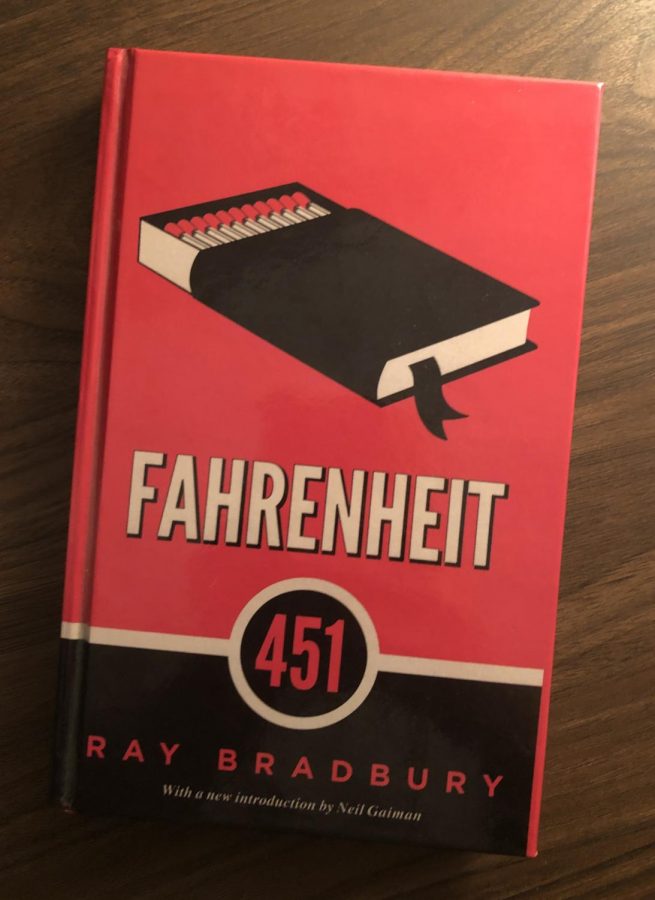Fahrenheit 451: fire still burns 60 years later
The 60 anniversary edition of Fahrenheit 451
Ray Bradbury’s Fahrenheit 451 is a timeless classic that provides unique commentary on technology’s role in the decline of creativity and critical thought. Originally published in 1953, the book still speaks to young readers.
Fahrenheit 451 follows the story of Guy Montag, a fireman who is tasked with burning books as well as any residence where books are found. He is content with his job and doesn’t think twice about burning books until he meets a teenage girl that makes him rethink his role and question the dystopian society that he lives in.
Although it is sometimes said that Bradbury’s book focuses on a future that belongs to the past, one which isn’t relevant to today, there are still many things that can be taken and learned from Bradbury’s writing. Whether that be his warning about censorship or the decline of critical thinking due to the amount of media we are exposed to and consume.
Along with the valuable lessons that can be taken from this book, it is packed full to the brim with carefully crafted metaphors and symbolism. The story provides a very unique perspective and commentary on the world around us, and makes readers rethink things that they might not have otherwise.
While there are many great things about this book, the characters seem to be pretty one dimensional and only really serve a purpose. There isn’t a lot of character development throughout the book and it makes the story feel kind of flat.
Also, while Montag’s internal conflict is always in focus, the external action doesn’t pick up until the third and final chapter “Burning Bright”. In the first two parts, this allows Bradbury to go more in depth to the complex ideas that are presented, but in the last part, it seems to kind of go downhill. The story, like the society, declines into chaos which takes away from the rest of the storyline.
Despite these flaws, Fahrenheit 451 is still a very relevant and valuable book to today’s society and a lot can be taken and learned from it.
“Fahrenheit 451”
Ray Bradbury
Simon & Schuster
(256 pages)







